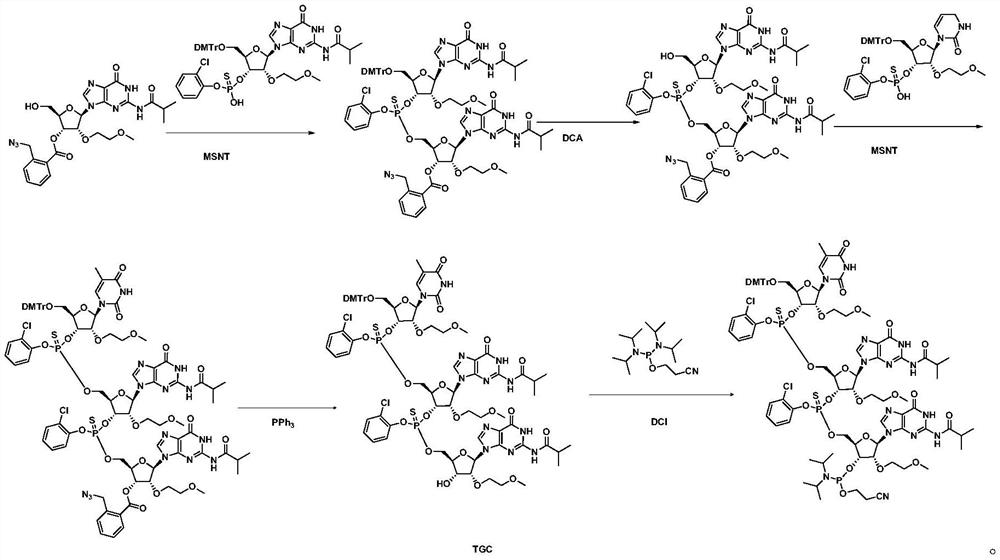Nucleic Acid Synthesis Methods
A synthesis method and nucleic acid technology, applied in fermentation and other directions, can solve the problems of long synthesis steps and low efficiency, and achieve the effects of improving purity, reducing three wastes, improving reaction efficiency and total yield
- Summary
- Abstract
- Description
- Claims
- Application Information
AI Technical Summary
Problems solved by technology
Method used
Image
Examples
preparation example Construction
[0025] In order to shorten the reaction time and improve the efficiency of nucleic acid synthesis, in a preferred embodiment of the present application, a nucleic acid synthesis method is provided, the synthesis method comprising: splitting the nucleic acid to be synthesized into multiple groups of fragments in sequence Carry out separate synthesis to obtain multiple groups of nucleic acid fragments, each group of nucleic acid fragments contains 2 to 5 bases; use solid-phase synthesis to connect the nucleic acid fragments in sequence to obtain nucleic acids.
[0026] This application creatively proposes a new synthesis strategy of multi-base short fragment coupling instead of single-base coupling. First, multiple short fragments of 2-5 bases are synthesized, and then solid-phase synthesis is used to synthesize The sequences of nucleic acids are sequentially assembled. Multiple fragments can be synthesized in parallel at the same time, and it is not limited by the loading capac...
Embodiment 1
[0063] The synthesis of embodiment 1 Spinraza
[0064] according to figure 2 The steps shown synthesize fragments of each 3 bases one by one. Concrete reaction condition is as follows:
[0065] The synthesis is the same as in Example 1, but the nucleotide monomer is replaced by a nucleic acid fragment of 3 bases, and the total number of cycles is reduced to 6 cycles.
[0066] Finally, the product yield was 64%, and the HPLC purity was 98%.
Embodiment 2
[0067] The synthesis of embodiment 2 Spinraza
[0068] refer to figure 2 In the steps shown, fragments of every 2 bases are first synthesized one by one. Concrete reaction condition is as follows:
[0069] The synthesis is the same as in Example 1, but the nucleotide monomer is replaced by a nucleic acid fragment of 2 bases, and the total number of cycles is reduced to 9 steps. In addition, the deprotection reagent is a toluene solution with a constant volume.
[0070] Finally, the product yield was 54%, and the HPLC purity was 95%.
PUM
 Login to View More
Login to View More Abstract
Description
Claims
Application Information
 Login to View More
Login to View More - R&D
- Intellectual Property
- Life Sciences
- Materials
- Tech Scout
- Unparalleled Data Quality
- Higher Quality Content
- 60% Fewer Hallucinations
Browse by: Latest US Patents, China's latest patents, Technical Efficacy Thesaurus, Application Domain, Technology Topic, Popular Technical Reports.
© 2025 PatSnap. All rights reserved.Legal|Privacy policy|Modern Slavery Act Transparency Statement|Sitemap|About US| Contact US: help@patsnap.com



